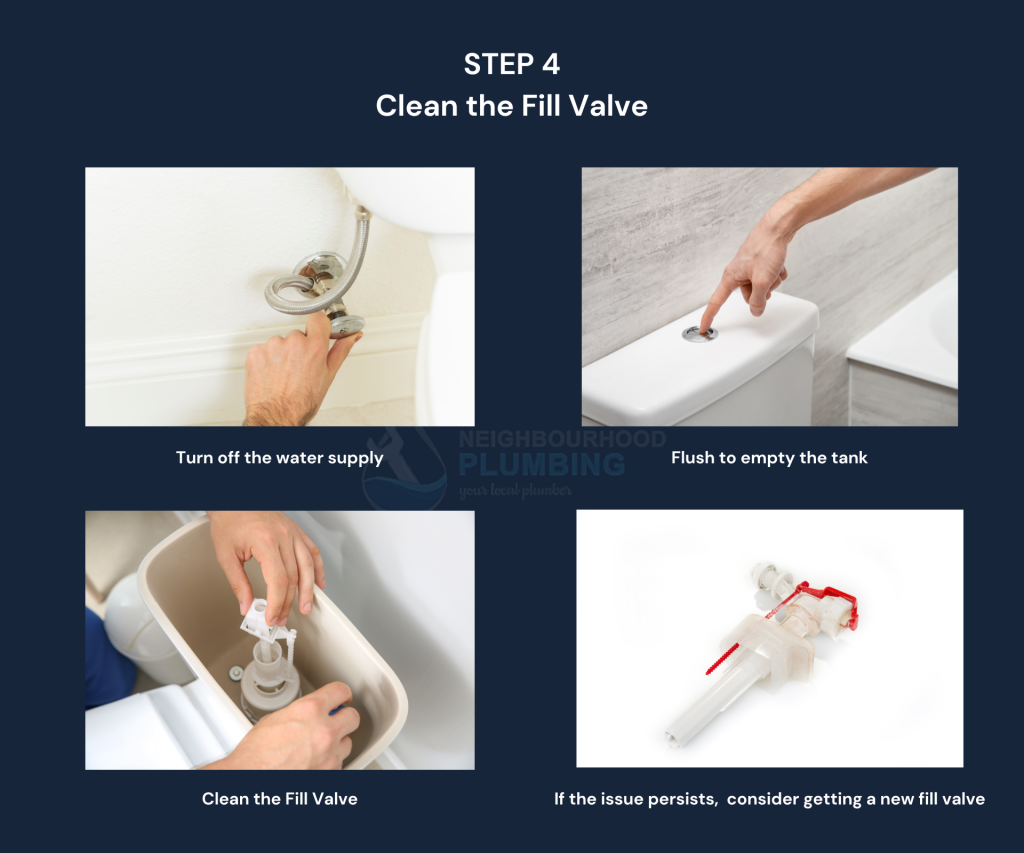
Why is your toilet filling up slowly?
As a daily toilet user, you must be frustrated and want the issue solved quickly.
Imagine doing some important business there, only to be met with a trickle of water refilling the tank. The mood is ruined as your toilet takes a long time to fill.
Overflowing and slow-filling toilets are typically signs of a blocked toilet. It’s about time for you to think: Why is my toilet filling slowly, and does it need toilet repairs?
Let’s take a moment to learn why your toilet is slow to fill and how you can unblock it!
If all else fails, your friendly Melbourne plumber is one call away.
Why Is My Toilet Filling Up Slowly? Possible Causes
A slow-filling toilet tank is often caused by a variety of factors. One common reason for a toilet’s slow to fill is a partially clogged fill valve, which can restrict water flow and prolong the refill time.
Additionally, sediment buildup in the tank or issues with the water supply line can contribute to the problem.
Knowing how to unclog a toilet properly is essential, as improper methods can exacerbate the issue. Start by checking the fill valve for debris and cleaning it if necessary. Ensuring the water supply line is fully open and free from obstructions is also crucial.
Aside from unblocking the toilet, replacing a faulty fill valve or adjusting the float can resolve the slow filling issue. Regular maintenance and prompt attention to minor clogs can prevent more severe problems and ensure the efficient operation of your toilet
How Do You Fix a Toilet That Fills Up and Drains Slowly? 4 Easy Methods
Leave the question, ‘Why does my toilet take so long to fill up?’ behind because you’re about to know how to fix this issue!
1. Plunge the Toilet

A clog could be restricting both the filling and draining processes. Begin by using a flange plunger to create a tight seal over the toilet drain.
If it’s not easy, it might be a sign that it’s the cause of the toilet tank filling slowly. Plunge forcefully and repeatedly for several pumps. If the clog dislodges, the toilet should refill and drain normally.
2. Check the Flapper Valve

The flapper valve, located at the bottom of the tank, forms a seal over the drain. If it’s worn, damaged, or improperly seated, water can leak into the bowl, preventing the tank from refilling properly and causing slow draining.
Inspect the flapper for cracks or tears and ensure it sits flat on the flush valve opening. You might need to adjust the flapper chain or replace the valve entirely if it’s faulty.
3. Adjust the Fill Valve

The fill valve regulates the amount of water entering the tank. If the water level is too low, it can cause slow refills and weak flushes.
Locate the fill valve and consult your toilet’s manual or manufacturer instructions for specific adjustment methods. Usually, you can adjust a screw on the fill valve to raise or lower the water level.
4. Clean the Fill Valve

Sediment buildup within the fill valve can restrict water flow, causing the toilet to fill slowly. To empty the tank, turn off the water supply valve to the toilet and flush.
Depending on the model, you might be able to access and clean the fill valve screen or filter. If cleaning doesn’t resolve the issue, consider replacing the fill valve.
Read more: How to fix leaking toilet base
How to Avoid a Slow-Draining Toilet in the Future: 6 Effective Tips
Here are some tips to prevent a toilet fills slowly in the future:
1. Schedule Regular Maintenance

Routinely inspect your toilet and plumbing for any signs of clogs or slow drainage. Regularly use a toilet brush to clean the bowl and ensure proper water flow.
Aside from preventing toilets from slowly filling, this method is also effective in avoiding toilets overflowing.
2. Monitor Water Level

Ensure your toilet’s water level is adequate. Low water levels can result in weak flushes, contributing to gradual blockages. Adjust the float in the toilet cistern to maintain proper water height.
3. Schedule Preventative Maintenance

Every few months, pour a cup of baking soda and white vinegar down the drain. This fizzing concoction can help break down minor clogs and keep your pipes clear.
4. Install a High-Quality Flapper

A durable and well-fitted flapper ensures efficient flushing. Replace worn-out flappers promptly to maintain strong water flow, which helps prevent clogs.
5. Address Sluggishness Swiftly

If you notice your toilet draining slowly, don’t ignore it. Prompt action can prevent a minor blockage from worsening and causing a more serious issue.
6. Don’t Flush Unflushable Items

Only flush toilet paper and human waste.
Avoid flushing anything else, including feminine hygiene products, baby wipes (even if labeled “flushable”), or food scraps. These items can contribute to clogs that cause slow drainage.
Read more: How to fix toilet that keeps running
Conclusion
Have you had enough of the ‘why does my toilet take so long to fill’ problem? If the methods above don’t solve the problem, it might indicate a more complex issue like a blockage in the main drain line or a faulty toilet tank itself.
In such cases, it is recommended that you consult Neighbourhood Plumbing for a proper diagnosis of the toilet filling up slowly and the best solution. Be hassle-free and leave the problem to the expert!
Frequently Asked Questions (FAQs)
Does Pouring Boiling Water Down a Toilet Unclog It?
No, boiling water isn’t recommended for unclogging toilets. It’s unlikely to dissolve most clog materials, and the extreme heat can crack toilet components.
Will a Clogged Toilet Unclog Itself Over Time?
Maybe, but it’s best not to wait and see. Minor clogs might dislodge on their own, but larger blockages or those caused by foreign objects can worsen over time and cause flooding or damage to your plumbing system.
What Dissolves Toilet Blockages?
A commercial drain cleaner can be effective for some clogs, but use them with caution and strictly follow the instructions. A safer alternative is a baking soda and vinegar solution for minor blockages. However, if the clog persists, it’s best to call a plumber to avoid causing further damage.
About the Author
From unclogging the toughest drains to repairing leaking toilets, Ricky is a seasoned plumber who has brought his craftmanship to homes across Melbourne. He is passionate about sharing plumbing tips just as much as he is about fixing your plumbing issues. So, when your taps or pipes begin leaking, you know who to call.





